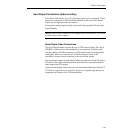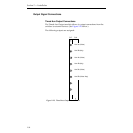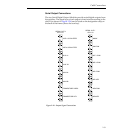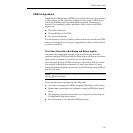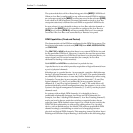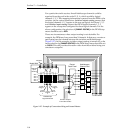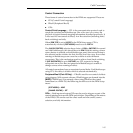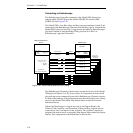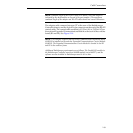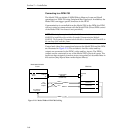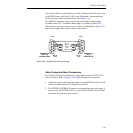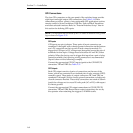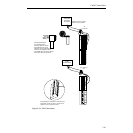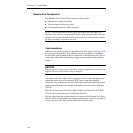
2-57
Cable Connections
Control Connection
Three forms of control connection to the DPMs are supported. These are
■ CPL (Control Point Language)
■ PBusII (Peripheral Bus II)
■ GPIs
Control Point Language — CPL is the communication protocol used to
couple the switcher and Kaleidoscope. One of its uses is to convey the
physical-to-logical channel mapping information described previously. It
is also used for run control of effects, Aux Bus selection (including front/
back switching) and tally.
When
[DPM TYPE] is set to KSCOPE in the DPM Setup menu, CPL is
automatically invoked.
[PORT ASSIGN] must be set to PORT A1.
The
[AUX BUS CONTROL] selection has a choice of DPM or SWITCHER. In normal
use with Kaleidoscope, this should be set to
DPM. With this setting, when a
source button is selected on the Kaleidoscope panel, that source button is
also selected on the switcher for that Aux Bus, and vice versa. So an effect
running on Kaleidoscope can cause the switcher to select different
crosspoints. This is the mechanism used to achieve front/back switching.
If
[AUX BUS CONTROL] is set to SWITCHER, any CPL requests to change
crosspoints on an Aux Bus are ignored and Kaleidoscope is unable to
change sources when running an effect.
All control connections have an associated control delay. For Kaleidoscope
using CPL, this delay is 6 fields which is selected automatically.
Peripheral Bus II (Port A3 Only) — PBusII is used for run control of effects
using triggers. With current software, PBusII triggers are learned into the
[MISC] E-MEM level. For example, when using PBusII as the control
connection for a DPM-700, the following should be set in the DPM Setup
menu:
[PORT ASSIGN] = NONE
[CHANNEL ROUTING] = OFF
GPIs — Both input and output GPIs may be used as triggers as part of the
control interface between the DPM and switcher. Depending on the nature
of the DPM, GPIs can be used for effect recall and run control, source
selection, and tally information.



